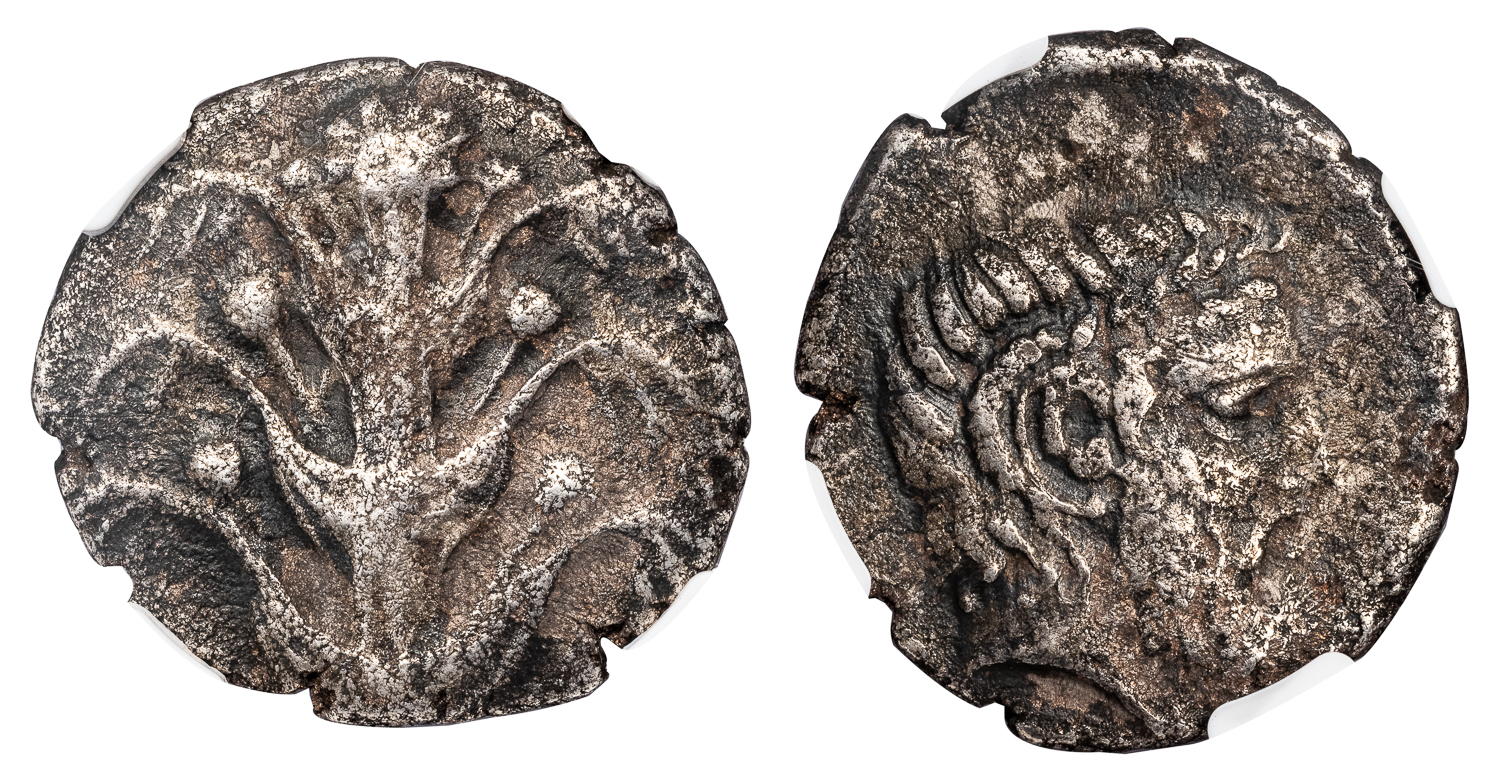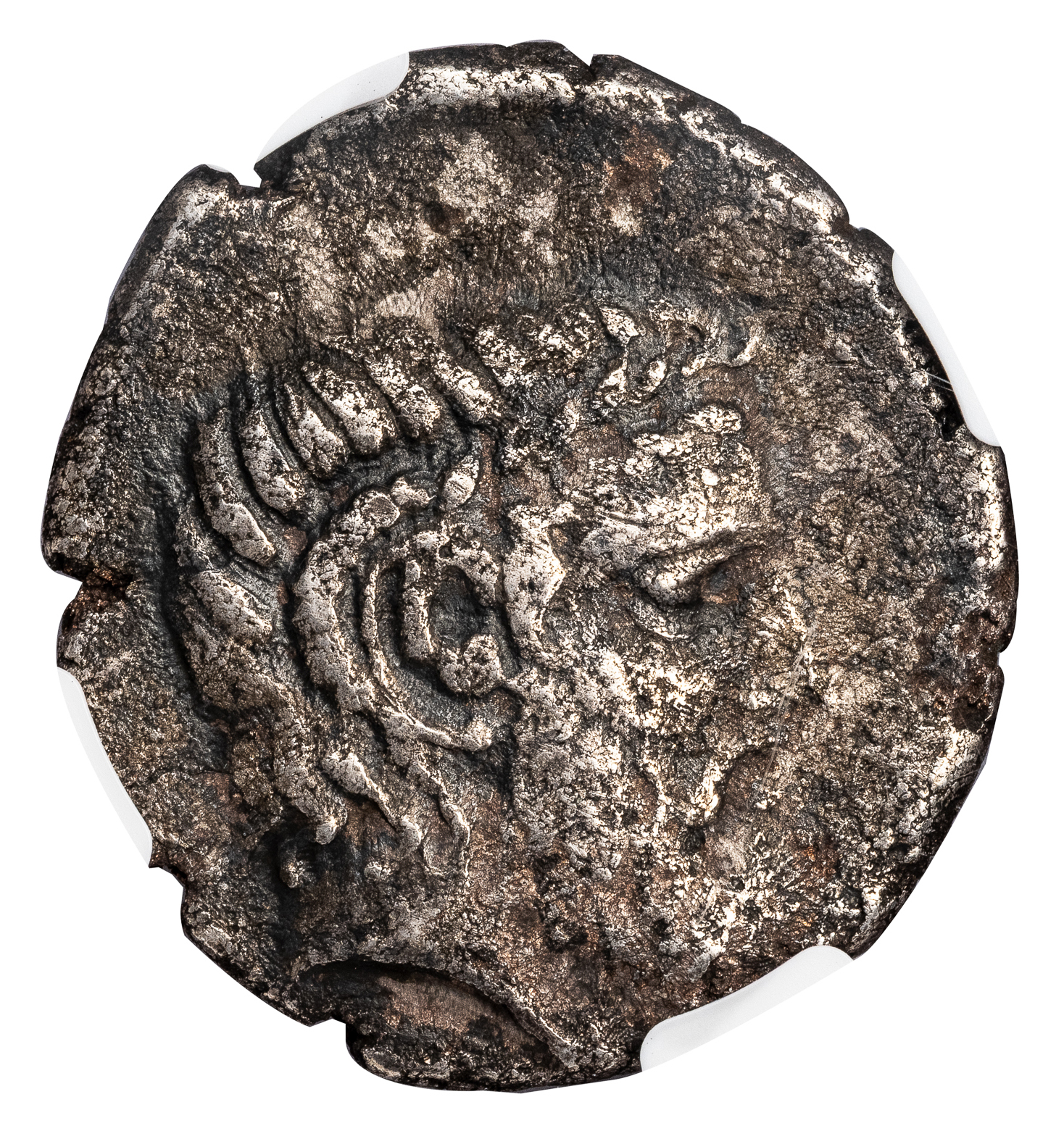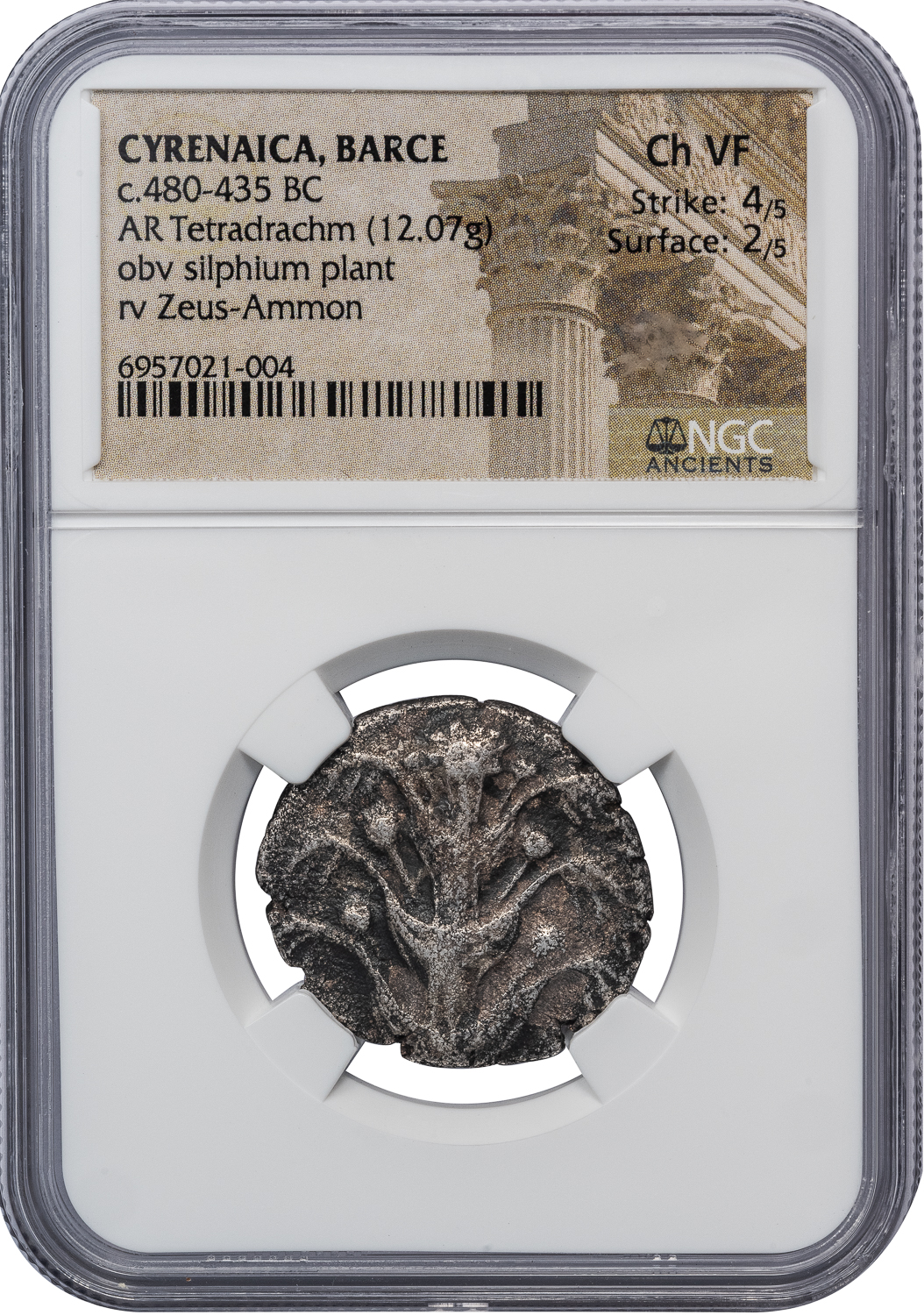BARCE SILVER TETRADRACHM – RARE SILPHIUM AND ZEUS AMMON ISSUE – CHOICE VF NGC GRADED GREEK CYRENAICA COIN (Inv. 20402)
$3,900.00
20402. CYRENAICA. BARCE. Ca. 480-435 BC.
Silver Tetradrachm, 12.07 g, 26 mm.
Obv. Silphium plant. Rev. Head of Zeus Ammon right.
SNG Copenhagen 1293; BMC 23.
NGC graded CHOICE VF, Strike 4/5, Surface 2/5, some surface roughness accounting for the 2/5 grade, but an extremely elusive and rare coin.
Barce, like the other cities of the Cyrenaica, grew wealthy from involvement in the Mediterranean grain trade and the export of silphium (possibly an extinct giant fennel), a plant widely used in antiquity for seasoning and medicinal purposes. Silphium, which grew only on a narrow coastal strip of the Cyrenaica, was supposed to be a good cure for a cough, sore throat, fever, indigestion, general aches and pains, and even insanity. However, it has been suggested that the plant may have been most desired for its use as a contraceptive. Excessive demand, overharvesting, and the encroachment of grazing animals seem to have led to the extinction of silphium in the first century AD. Pliny the Elder claims that the last known stalk of silphium was sent to Nero (AD 54-68) as a curiosity. The rarity and value of silphium, together with its uniqueness to Cyrenaica, made the plant and its fruit a popular emblem for coins struck by cities in the region as early as the sixth century BC. Cyrenaica was also famous for the oracular shrine of Zeus Ammon at the Oasis of Siwa. This god was really a local Libyan deity identified with the important Egyptian fertility god Amun, whom the Greeks in turn reimagined as a form of Zeus. He is easily distinguished from other depictions of the supreme Greek god by the addition of a ram’s horns.




